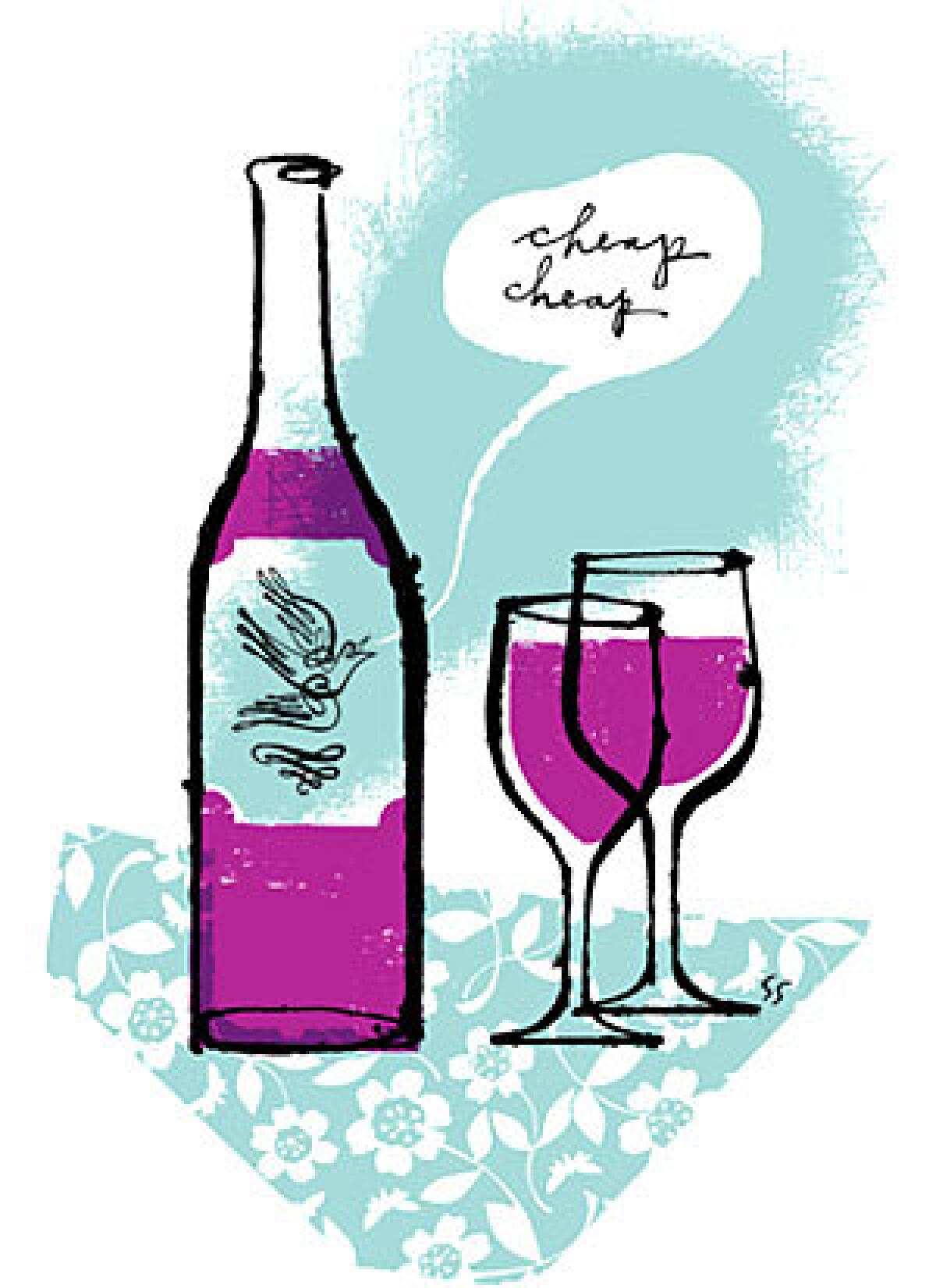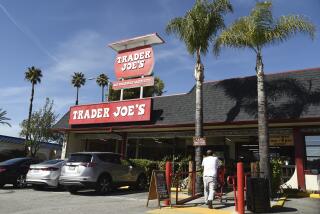Great wines for $15 and under

Because every day feels more uncertain, we need our everyday wines -- something tasty, straightforward, and cheap in the glass -- to signify the day’s end. For this, it’s useful to maintain what I call a “working case” for your home, a boilerplate selection of wines to have on hand for everyday sustenance.
There are simply hundreds of wines out there that over-deliver for the price. They may be products of a great vintage, or may represent an undervalued category, an unsung region, an unheralded variety, or may be closeouts or downturn deals, but they’re out there, and you should stock them.
My idea is to define a dozen slots for can’t-miss values, with a few options for each slot: six red, six white, all of them under $15, all of them reliable -- not overreaching, just satisfying and honest.
Let’s start with the whites. It’s springtime, so these selections are heavily weighted toward light, fresh, herbaceous wines, mostly devoid of oak and ready to complement a light spring meal.
GRÜNER BY THE LITER
Austria’s signature white, Grüner Veltliner, is the ideal springtime wine to keep in your working case, with herbal white pepper scents and bracing acidity. Even though top bottlings of Grüner can cost up to $60, there is a smart selection of everyday wines in the vicinity of $10, usually for a liter -- a third more than a regular bottle. Look for the big bottles from Loimer, Huber, Ebner and my go-to liter, Pollerhof.
NORTHWEST WHITES
While the prices continue to rise on Oregon Pinot Noir and Washington state Bordeaux-style blends, the whites from these respective regions are still priced well. In Oregon that means Pinot Gris, and the state’s largest producer, King Estate, is still one of its best; its Signature bottling can be had for about $14. Or pick the frisky Gris-based blend by Sokol Blosser, “Evolution No. 9,” so named for the nine cool-climate varieties you’ll find there (about $13).
In Washington the word is Riesling, and you can find juicy, well-balanced, food-friendly Rieslings from the likes of Chateau Ste. Michelle, Snoqualmie and Pacific Rim (all less than $10); for a couple of extra bucks kick yourself in the pants with “Kung Fu Girl,” which winemaker Charles Smith tailors for Asian dishes.
THE INDIGENOUS ITALIANS
In a little more than a decade, Italy’s indigenous whites have been transformed -- once thin and plonky, they’re now fresh, vibrant and full of character. Some of the best-tasting values come from the middle reaches in Umbria and the Marches, like the Trebbiano d’Abruzzo from Farnese (about $10), or the marvelous 2007 Verdicchio di Matelica from ColleStefano -- it’s won a slew of awards in the Italian wine press, and is still about $14.
THE LITTLE WINES OF FRANCE AND SPAIN
The country wines of France and Spain are my bread and butter whites. I always have a Muscadet on hand for a brisk aperitif or a meal with seafood -- the Domaine de la Pépière Clos des Briords (about $14), made from 80-year-old vines, is especially vibrant. Vins du Pays from the south are also a value, like the finely wrought Viognier that I found from the Languedoc (Guilhem Durand, about $11).
Many of Spain’s fresh Ruedas and Albariños remain well-priced and delightful with spring fare. From the Rueda one of the most reliable is crisp and lemony Naia Blanco, made from 100% Verdejo (about $12). As for Albariños, the ever-reliable Burgans and Martin Codax, from Galicia, still come in under $14.
SOUTHERN HEMISPHERE WHITES, PART 1
It’s my opinion that in the New World, and certainly in the Southern Hemisphere, no one is producing better Riesling than Australia. And for those of you fearful of residual sweetness in your Rieslings, get ready to pucker up: none are as dry, bracing and steely as Aussie versions. Many of these fall just above the $15 range (but few are more than $20) but one of my favorites comes in under $15 -- the lime-scented Pewsey Vale.
Meanwhile New Zealand Sauvignon Blanc has crept up in price over the last few years, so that the choices south of $15 are limited. But two reliable ones are Brancott and Nobilo (both about $12).
SOUTHERN HEMISPHERE WHITES, PART 2
Chile and Argentina are known for their red wines (on this, more to follow) but each produces vibrant whites as well, from grape varieties they’ve adopted as their own. In Argentina, that’s Torrontes, a crisp Iberian variety that smells of citrus blossom and tastes faintly tropical -- the best comes from Dominio del Plata, under the brand Crios (about $13).
Chile meanwhile has thoroughly embraced Sauvignon Blanc as its own, made in a style that suggests New Zealand but is generally a little fruitier and nearly always cheaper. There are several worthy candidates, but perhaps the best for the buck is Veramonte, from Casablanca Valley (about $10).
THE REDS
The rule book on reds for the working case is all about immediacy -- juicy, fresh, vibrant wines with honest fruit and balanced flavors -- simple wines largely oak-free and “unspoofulated.”
LITTLE ITALY
2007 was a fantastic vintage for much of Italy, none better than in the Piedmont, whose little wines, Barbera and Dolcetto, are simply spectacular. Seek out several from the vintage, but one of my favorites is the Briccotondo Barbera from Fontanafredda -- an absolute steal at $12.
THE RHÔNE
Côtes du Rhône reds have been values for years, but the 2006 and 2007 vintages were simply superb in the southern Rhône. Blends of Grenache, Mourvèdre, Syrah and Carignan are fruit-forward, frisky, a little funky, and incredible values.
One of the most reliable names in the southern Rhône, the Perrin family, has put out a 2007 Réserve Côtes du Rhône that will knock your socks off for $8. For a few dollars more consider the luscious, herbaceous Côtes du Rhône called La Gerbaude, from Domaine Alary (about $14).
GRENACHE AND GARNACHA
Sounds contradictory, but one of the world’s most ubiquitous red varieties is also one of its most unappreciated: It’s Grenache, and a well-made one is as satisfying as any red wine on Earth. Many Rhône reds are Grenache-heavy, but I also found two terrific Spanish Garnachas worth seeking out -- a Grenache-dominant wine from Montsant producer Celler de Capçanes called “Mas Donis” (about $11), and the other from older vines west of Barcelona in Aragon, from a winery called Monte la Sarda (about $13).
Meanwhile, there’s a lot of buzz over the Grenache from Barossa called “Bitch” from R Wines. I’m not exactly clear on the message, and I’m not sure I’d want to serve it in mixed company without decanting it -- but you can’t beat Grenache from 25-year-old vines in Australia’s most fabled reds region for $10.
SOUTH AMERICAN REDS
Argentina and Chile still offer great value from their respective adopted varieties. For Argentina, that’s Malbec, and it’s routinely delicious -- mildly spicy, mildly floral aromatics, silky blue fruit flavors, firm tannins and as juicy as raspberries plucked off the bush. There are several to choose from, but I’m liking the Terrazas de los Andes, from the Luján de Cuyo (about $10), for its juicy blackberry fruit with a hint of spice.
Chilean Carmenere, too, is on the right track. After a couple of initial vintages where the wines seemed green and shrill, I’m happy to report that the country is now producing succulent, mouth-filling Carmeneres with deep purple fruit and good power, such as the fully organic Emiliana Carmenere from the Colchagua Valley (about $10).
UNDERPRIVILEGED AMERICAN BLENDS
There are lots of cheap California appellation Merlots, Cabs and Pinots out there right now. Have at them -- with the wine glut, many are made with better fruit than in previous vintages. But for inexpensive, high-quality reds, my money has always been on blends, Rhône-style and otherwise. The best of them showcase what a winemaker can craft from myriad elements.
Etude, the reputable Pinot winery in Carneros, has started a new brand called Fortitude that includes two red wines from older vineyards, many of which were planted decades ago with heritage varieties like Counoise, Carignane, Petite Sirah and Valdigue. One is called “Frediani Field Blend” and the other “Shake Ridge.” Not only are they inexpensive (as little as $14) and delicious, I also like them because they’re a nod to California’s winegrowing past. Or you can choose from more traditional Rhône blends such as Qupe’s “Los Olivos Cuvée,” Andrew Murray’s “Tous les Jours,” and Steve Beckmen’s “Cuvée le Bec,” all of which hover around $15.
THE CLOSEOUTS
As I perused wine shops I paid close attention to the end-caps -- the case stacks that often form the end of wine rows -- and I saw plenty of good wines at unheard-of prices. So I’d recommend keeping a slot open for closeout deals. I scored a California Syrah from Mendocino County for $12 (Copain “l’Hiver”), that was easily worth twice that. I saw a reputable Monterey Chardonnay (Kali Hart) selling for a song, and a Stags Leap Claret for less than $20 (Steltzner). For the next six months or so, that piece of real estate is going to be crowded with values; this slot will be in high rotation in your working case.
More to Read
Eat your way across L.A.
Get our weekly Tasting Notes newsletter for reviews, news and more.
You may occasionally receive promotional content from the Los Angeles Times.






